
| WWT Shows | CLICK TO: Join and Support Internet Horology Club 185™ | IHC185™ Forums |

|
• Check Out Our... • • TWO Book Offer! • |
Welcome Aboard IHC185™  Internet Horology Club 185
Internet Horology Club 185  IHC185™ Discussion Site Main Page
IHC185™ Discussion Site Main Page  Horological Discussions, Questions and Answers
Horological Discussions, Questions and Answers  European Pocket Watch Forum
European Pocket Watch Forum  Any information on English pocket watch,
Any information on English pocket watch,
 Internet Horology Club 185
Internet Horology Club 185  IHC185™ Discussion Site Main Page
IHC185™ Discussion Site Main Page  Horological Discussions, Questions and Answers
Horological Discussions, Questions and Answers  European Pocket Watch Forum
European Pocket Watch Forum  Any information on English pocket watch,
Any information on English pocket watch,Go  | New Topic  | Find-Or-Search  | Notify  | Tools  | Reply to Post  |  |
| IHC Life Member Certified Watchmaker |
Hi, I am after some information on this English pocket watch, about S18, Joseph Wood Bury, No 22691, I find interesting the crown wheel built into the stem, seems to be well jeweled and side stop work on the case  | ||
|
| IHC Life Member Certified Watchmaker |
p2 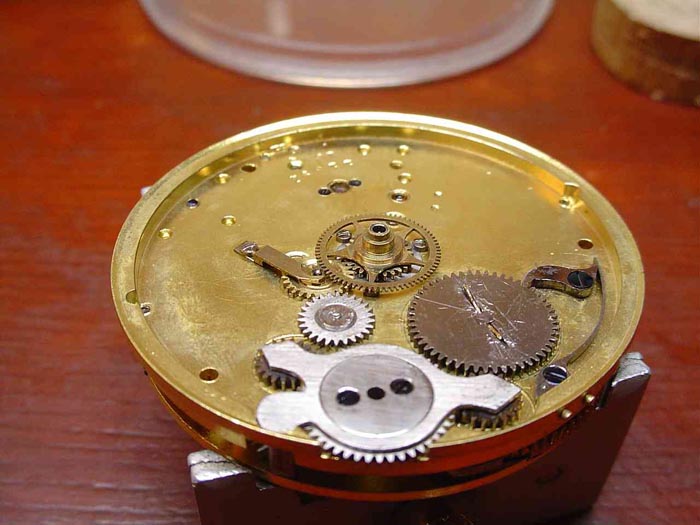 | |||
|
| IHC Life Member Certified Watchmaker |
p3  | |||
|
| IHC Life Member Certified Watchmaker |
p4 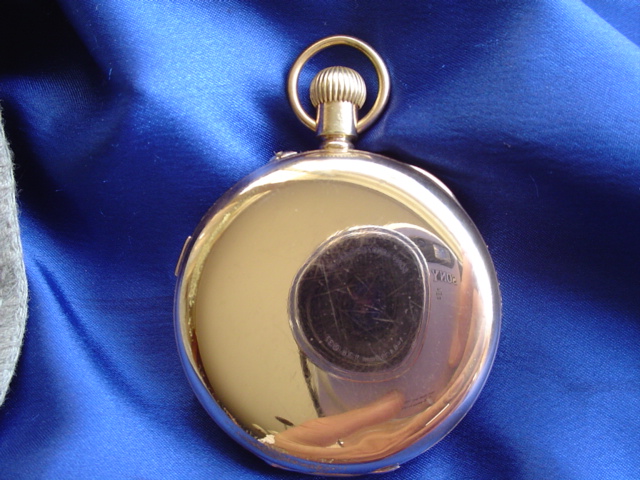 | |||
|
| IHC Life Member Certified Watchmaker |
p5 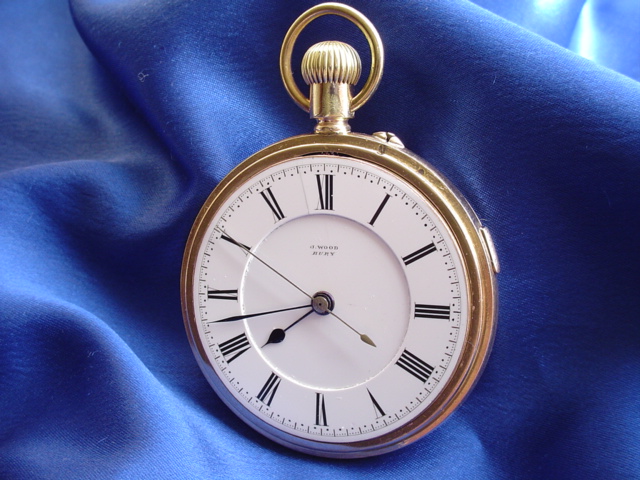 | |||
|
| IHC Life Member Certified Watchmaker |
p6 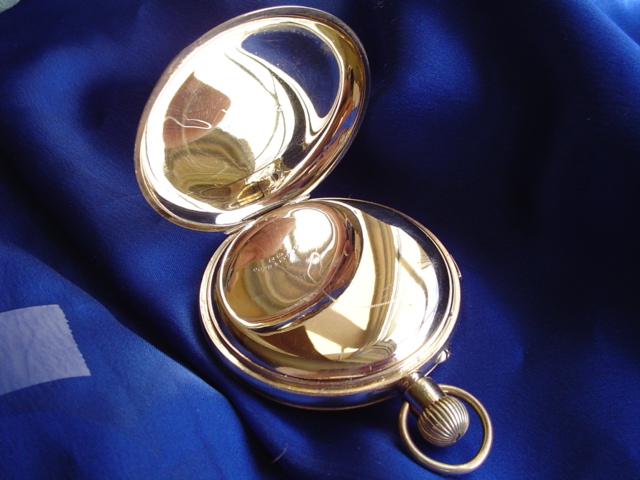 | |||
|
| IHC Life Member Certified Watchmaker |
p7 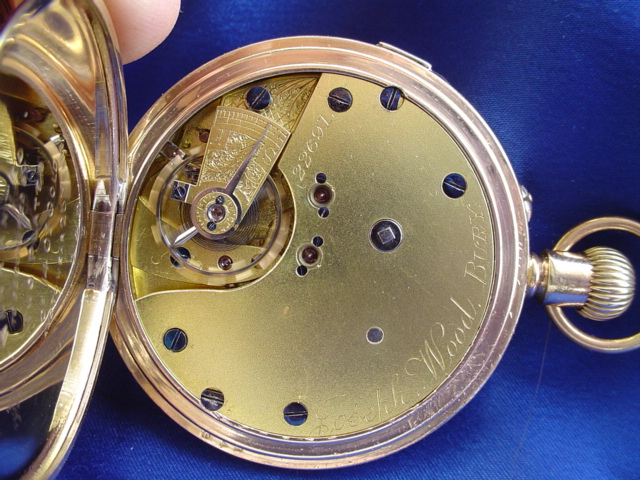 | |||
|
| IHC Life Member Certified Watchmaker |
p8  | |||
|
Chris, What an outstanding dial, and the watch is beautiful. I found a man of that name in Genealogy, however it's from the 1600's but you may want to look at it. It's about them coming here from England! Can you show a picture of the writing on the case? If so, it may lead to where it was made and get a better location of the watch, maybe not, but worth a try. Thank you for the pictures, really nice. http://genforum.genealogy.com/oh/messages/3417.html Sheila | ||||
|
Chris, Bury is a town about 20 miles north of Liverpool..There is a listed maker by this name around 1871 from Leeds, which is not that far from Bury..Watch appears to be a little later... Any hallmarks on the inner case....Nice looking movement.. | ||||
|
| IHC Life Member Certified Watchmaker |
Sorry no good picture of inner, but marked as folows, Warrented to be covered with two plates of 14Ct, gold and to wear 25 years, 143 Z, inside of outer cover, gold filled 14 Ct, no hall marks etc. looks to be a good movement. how common in that winding method?. | |||
|
Chris, There will not be any hallmarks with the case being filled..Sorry I missed that in the first picture.. They only appear on cases of carot gold or Sterling silver.. The winding is fairly common style on turn of the century English TOP winding as they call it..Pin Setting just eliminates a few parts..and makes it more reliable in my opinoin.. | ||||
|
Chris, I just looked at those winding wheels on page 438 of the "Book" and then noticed it on your watch. It doesn't say much about it, but what John said, it eliminates some parts. It also said that with one less pinion and wheel the escape wheel ran reverse to a standard four-wheel watch. That may be a comparison to the early watches they were talking about in the post though. Does yours wind clockwise? John, Good information, I always wondered if they were a problem or not. It's nice to know it makes it more reliable. Very interesting info.! Sheila | ||||
|
| IHC Life Member Certified Watchmaker |
Hi, I was curious about he dial, being laid out in a chronograph style, I originally thought it was just a selling point, However it appears the stop mechanism, (of simple constructed) in order to facilitate setting, but mainly this watch was used as a very basic chronograph: you started the center seconds and stopped the watch at the lever to read the elapsed time. Real chronographs were on the market by then, but any genuine English constructions in these years are rare?/expensive in there day?. Nicole, Nielsen introduced the zero-setting cam device in the 1860s, maybe they held a patent that was too costly for other watch manufacturers who offered the simpler and much cheaper 'chronograph' version for the average buyer. | |||
|
Chris, Many of the dials on this style Chronograph watch said Center Seconds Chrongraph.. I am not sure what the purpose of these were, remember the watch stopped when checking the elapsed time.. You see quite a few of them.. I believe that the center seconds was the novel thing..the sinking of the center part of the dial also gave a "different" look to the watch.. It has been 80 years or so with the same old look..Some dials had the seconds track indicate different fraction of a second.. | ||||
|
| IHC Life Member Certified Watchmaker |
Hi John, I suppose if used as a cheap Chono the time function was considered abandoned would have been reset later, having said all this, the slide stop even when new and sharp/larger this one would be difficult to operate smoothly. Maybe just following a moving trend in watch sales and adapting to the popular styles being sold on the higher end. | |||
|
Chris, Don't know where you guys find watches like these in this condition, beautiful! Here in the UK I think they've all been squirrelled away, they're mostly worn out or mangled junk What you have is a fairly 'genereric' (no not being unkind) English lever watch (sidelever escapement). The 'stopwatch' function is also common on this type of watch and as has already been stated, simply stops the watch by locking the balance. They are 'generally' quite good grade watches and often jewelled as yours is, with screwed in chatons. You will also find many that are a similar style but not jewelled. If you browse Ebay, particularly for English lever movements, you will find many such examples especially by makers such as Kendall & Dent, Roskell, Thomas Russell etc. I have very many examples here in my movements 'bits box' both complete and dismembered....... I actually have some by Kendal and Russell that are complete watches - but few actually run! They were originally bought as 'Folio projects' when I was studying to write the BHI examinations, alas 'twas not to be sadly!...... but I still have the watches If you type 'Freesprung' into Ebay's search box, you will usually turn up a couple of this type movement which, although otherwise identical to yours, are often elaborately engraved, have no regulator or engraving on the balance cock, and feature a freesprung balance using either a Breguet overcoil, or even rarely a Helical hairspring. This type is the blighter that I'm 'to-ing and fro-ing' with as regards restoring at the moment - see my thread on the H. White Pre WW1 pocket watch in the military watches forum. The sunken dial is also a feature of many watches of that era, and with the centre seconds hand, means the height of the crystal can be kept down as the hour hand is sunk into the well. As regards the maker, John is right as regards Bury being North(ish) of Liverpool, but be aware that there are also towns of Bury in Cambridge, Somerset & West Sussex. You'll need to check census records for that era for watchmakers or retailers to nail him down. Neither Loomes or Baillie lists him as a maker. It may be that up 'till now, no record of his work has been found, or, it could mean he was just a retailer! I'm not clear how the clockmaker's company dealt with provincial makers signing their watches/clocks outside the city of London, but I've always assumed it was illegal to do so if not 'Free of the Clockmaker's Company. ie:a Time served apprentice, finally presenting a 'Masterpiece' to the Worshipful company of Clockmakers' (which was approved), so granting Freedom - and with it the 'Right' to sign timepieces. I'll need to dig out the books and refresh my memory on that. John. | ||||
|
| IHC Life Member Certified Watchmaker |
Thanks for all the information, John, most appreciated. These watch are quite common over here and very much overlooked being a European watch and non-railroad so many bargains can still be had. | |||
|
| Powered by Social Strata |
| Your request is being processed... |
|
Welcome Aboard IHC185™  Internet Horology Club 185
Internet Horology Club 185  IHC185™ Discussion Site Main Page
IHC185™ Discussion Site Main Page  Horological Discussions, Questions and Answers
Horological Discussions, Questions and Answers  European Pocket Watch Forum
European Pocket Watch Forum  Any information on English pocket watch,
Any information on English pocket watch,
 Internet Horology Club 185
Internet Horology Club 185  IHC185™ Discussion Site Main Page
IHC185™ Discussion Site Main Page  Horological Discussions, Questions and Answers
Horological Discussions, Questions and Answers  European Pocket Watch Forum
European Pocket Watch Forum  Any information on English pocket watch,
Any information on English pocket watch,©2002-2025 Internet Horology Club 185™ - Lindell V. Riddle President - All Rights Reserved Worldwide

